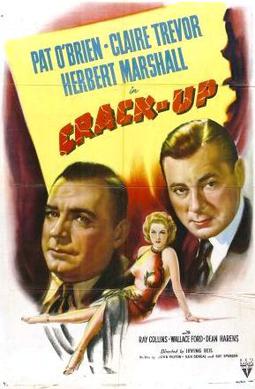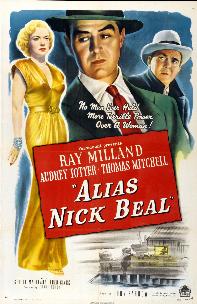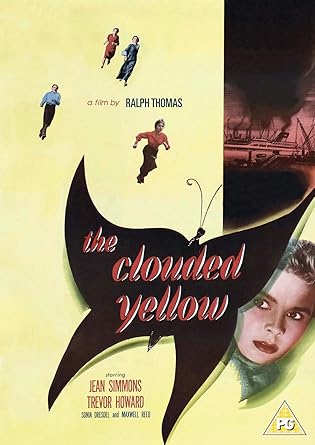
Film Noir Flashback/99 River Street
March 17, 2025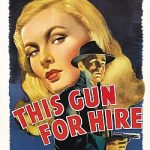
Film Noir Flashback/This Gun for Hire
April 11, 2025I post reviews (Film Noir Flashback) of movies from, and inspired by, Hollywood’s Golden Age of Noir, the 1940s and 1950s. I am a film noir enthusiast. Maybe, like me, you are looking to enjoy films that are different, or of a different era. Films you may not have seen, ones encompassing cynical detectives, seductive femme fatales, flawed sidekicks all tossed together into intricate plots. Not forgetting the snappy dialogue too.
Backstory: Film Noir has its roots in German expressionist cinematography and American crime fiction. During the 1930s Hollywood became a perfect storm of film artists fleeing the threat of Nazi Germany, emigrating to America, and specifically to the Film studios of Hollywood. This included great directors such as Fritz Lang, Jaques Tourneur, Michael Curtiz and Robert Siodmak.
This new dramatic visual style combined with American hardboiled crime stories (noir fiction), emerged during the Great Depression and produced many classic noirs. Some of these writers include: Raymond Chandler, James M. Cain, Dashiell Hammett, Patricia Highsmith, Jim Thompson and Mickey Spillane.
I hope to showcase some of these memorable noir movies here for you. And advance apologies for a mixture of British and US English occasionally and potential spoilers, although I will always try to avoid revealing the full ending. I have applied the link below, to the Amazon.com DVD of today’s featured film.
Inspired by hardboiled detective stories and film noir, I have written the Sterling Private Investigator Series, set in present-day London. I have also posted a link to my books at the bottom of the page. For more of my Film Noir Flashback blogs: https://johnkempauthor.com/blog-film-noir-reviews/
Today’s Film Noir Flashback is:
Crack-Up
USA DVD: https://amzn.to/4bVRBY3
UK link DVD: https://amzn.to/4iWgu8p
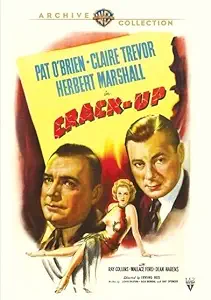
“Could I kill…. and not remember?”
Film Studio: RKO Pictures 1946 B&W
Director: Irving Reis
Original Music: Leigh Harline
Cinematography: Robert D. Grasse
Film Editor: Frederick Knudtsen
Story: “Madman’s Holiday” by Frederic Brown
Screenplay: Ben Bengal, Ray Spencer
Main Actors: Pat O’Brien, Claire Trevor, Herbert Marshall, Ray Collins
Produced by: Jack J. Gross
Run time: 93 minutes
Preview
Courtesy of Wikipedia:
Crack-Up is a 1946 American film noir starring Pat O’Brien, Claire Trevor and Herbert Marshall. It was directed by Irving Reiss, remembered for directing many “Falcon” movies of the early 1940s including The Falcon Takes Over. The drama is based on “Madman’s Holiday”, a short story written by mystery writer Frederick Brown.
Synopsis
Crack-Up (which could loosely be called an “art noir”), begins with a dramatic shot of a train hurtling towards the camera/viewer. The action switches to George Steele (Pat O’Brien), who violently beats on a door, breaking the glass, and entering the Manhattan Museum of Art.
Steele is apprehended in the lobby by a patrolman. Upon hearing the ruckus, the members of the museum board, including Stevenson (Damian O’Flynn), and Dr Lowell (Ray Collins), abandon their meeting and head downstairs. They soon realise it is their colleague, George Steele. “You’re not going to arrest him?” A member asks the cop. “I’m not going to pin a medal on him. He took a poke at me,” he replies but agrees to a reprieve for the intruder.
Note: Steele is a renowned art expert and critic, exposing numerous Nazi art forgeries during WW2. Presently he has been giving public lectures at the museum.
Taken inside, the disturbed Steele comes around in the presence of his girlfriend, Terry Cordell (played by Claire Trevor) and Police Lieutenant Cochrane (Wallace Ford). Indicating, he has survived a train wreck, “Half an hour out of Grand Central,” he says. The Lieutenant is dubious about his claim. “There wasn’t any wreck,” he contradicts. “We’ve checked every railroad east of Chicago.” His colleagues look at one another doubtfully. And you can interpret those looks… Is our colleague cracking up? Time for an extended holiday or worse, a visit to a psychiatric unit?
At this point, the film goes into a flashback and to an art lecture Steele gave the previous day. Including, one lively exchange and outburst from an abstract art champion. Although generally well received, afterward, the museum director, Barton (Erskine Sanford) rebukes Steel for his antagonizing style. Steele had made an off the cuff promise (to the patrons) to use an X-ray machine on a masterpiece that was recently exhibited to display forgery detection methods. Steele is told the paintings are already crated for shipment and bringing them back is expensive and inconvenient. “This is a museum, not a hospital,” Barton says, adding that he will make his feelings known (about Steele) at an advisory board. Time to dust off that CV (or résumé), George.
Later, while out to dinner with his girlfriend, a magazine writer (Terry Cordell), Steele receives a phone call regarding his mother’s sudden ill health and her having been taken to hospital. He hurries to Grand Central Station, taking the late train to see her. At some point in the journey, he sees the bright lights of an oncoming train and to his horror, the two trains are in a head-on collision. Back to the present, and Steele recalls, “I threw up my hands, everything exploded in front of me, and there were screams. That’s all I remember.”
Cochrane is sceptical of the story and tells Steele, his mother is fine, and there was no record of a phone call from The Glenbeigh Hospital (and there was not a ticket stub in his pocket either). Steele’s colleagues vouch for him (but not necessarily for his mental health), wanting to prevent any possibility of a scandal… Outside, during a smoke break, Cochrane shares a conversation with Traybin (Herbert Marshall) who is an art expert. For many years Traybin has worked in the art world, authenticating stolen paintings in attempts to return them to their original owners. Now working for Scotland Yard, he wants Cochrane to put a tail on Steele, in hopes he might lead him to the forgery fraudsters. Though, there is no evidence (we have seen) suggesting this.
Steele retraces his footsteps by taking the same train to the town of Marlin. The journey is uneventful (save for a few card-playing characters.). Thankfully, no sign of any oncoming trains this time. Besides, what are the chances…. The trip becomes more illuminating however, when he meets the ticket clerk in Marlin who witnessed two men carrying a “drunk” off the train the previous night. Steele suspects it was him; drugged and kidnapped. So, if there was no train crash, who did this to him and why?
Stevenson tells Steele that paintings on a ship (when sailing to England), were destroyed in a suspicious fire… Steele suspects that a Gainsborough was likely a fake and destroyed to cover up the theft of the original painting. He asks Stevenson to investigate and go to the museum; he reports back, telling him he has some relevant information and to meet him at the museum’s vault. When Steele arrives, he finds Stevenson dead. And more specifically, murdered.
Steele is spotted onsite by a night watchman who immediately calls the police. Steele quickly flees and is now on the run and wanted for murder… His only hope is to prove his innocence and solve the case, heading to the docks and S/S Arcadia which will be transporting the recent exhibited masterpiece from the museum: The Adoration of the Kings. Will this painting end up as ashes too?
Things to like
*The locations: The museum is full of life-size statues (with at least one being knocked over). The penny arcade and the docks; “Pier 31”, give an authentic feel of the past.
*The waiting room scene. The elderly man who works at the ticketing kiosk busy sweeping the floor, is confronted by George Steele. The railroad employee is reticent at first, but once he begins to talk (and talk), he shares details that alert George (and the viewer) to the sinister events of the previous night…
*British actor Herbert Marshall played the leading romantic man in numerous films opposite luminaries such as Claudette Colbert, Marlene Dietrich, and Greta Garbo. After the war he branched out in a variety of roles, playing a villain in Hitchcock’s Foreign Correspondent amongst others.
Here, he is suave and sophisticated, (and supposedly from Scotland Yard), but there might be a hint of deceit and bluff behind that façade. Is he one of the good guys (as suggested), or is is he implicated in fraud and murder? He lends great gravitas to the role. For more about Herbert Marshall’s career: https://en.wikipedia.org/wiki/Herbert_Marshall
Quotes
Police Lieutenant Cochrane: “Let’s get back to this train wreck that didn’t happen.”
***
Barton: “Your request to X-ray is ridiculous.”
George Steele: “Why?
Barton: “Because this is a museum not a hospital.”
***
George Steele: “From now on, my lectures will be conservative and dull. Tell the board they can relax.”
Barton: “When you arrived tonight the board had tentatively considered cancelling your lectures. I think under the circumstances we can consider the decision final.”
***
Traybin: “You played that quite well. Thanks.”
Police Lieutenant Cochrane: “The museum… the old man… Do they know why you’re here?”
Traybin: “I don’t think so.”
***
Stevenson: “Well, Lieutenant, when a member of your family is ill you want to help him, not punish him.”
***
Terry Cordell (to Steele): “The more you duck in and out of dark alleys the worse it looks for you.”
Must-see scene
The train crash flashback. This scene has a dream-like and surreal quality. From the moment George Steele races along the platform to catch his train, to seeing a man helping a colleague who is doubled over. Steele opens the door for them (nicely punctuated by shooting bursts of steam), and then takes a seat in the carriage. He restlessly flicks through a magazine while a an overly vocal railway employee sells chocolates and candy. The scene has a disorientating feel together with a sense of foreboding. Pre-Lynchian. For more of the great director, a master of this: https://en.wikipedia.org/wiki/David_Lynch
Police Lieutenant Cochrane contradicts Steele’s report of a train crash. So, we are already half-questioning the validity of Steele’s story. Is the soft dream-like quality a representation of his fuzzy memory or simply the shadings of a flashback? Or is something sinister already happening, even before that (possible) train crash? A few thoughts occur:
Who is the mysterious man wearing the fedora, sat opposite? We see him in profile, sitting there, silent and statuesque. What is his role in all of this? And what was wrong with the man who was being helped onto the train (now forcibly propped up in a seat). Was he ill or simply drunk? Why was the vendor so rude to Steele when he quietly asks him for cigarettes? Was he just lacking in customer service? Whatever it is, he adds to George Steele’s (and the viewers) unease.
When the conductor says, “Hello, Mr Williams,” to the man in the forward seat, it’s starting to feel like an Agatha Christie murder mystery. And we need to be remembering the small details, and in turn, we suspect George Steele needs to do so, too.
We then view George Steele from the exterior of the train through the window. His face becomes anguished as he scans the headlights of a fast-oncoming train, and to his horror, he realises the train is on the same track. The crash itself, is a dramatic flash of light and dark and fleeting images that convey the train’s collision. A scene that is both memorable and supremely crafted.
Summary
Crack-Up delves into the art world and the forgery of priceless masterpieces, and in doing so, creates an entertaining noir. The mysterious sequence featuring the train crash adds a gripping layer to the plot. Helped greatly by the atmospheric photography. The suspense builds nicely and with the false twists and turns, Crack-Up keeps the viewer guessing. It turns out the dealings of the art world are as dark and treacherous as any other noir category. If you like quirky off-beat films this is well worth a viewing.
For more Film Noir Flashback movie reviews: https://johnkempauthor.com/blog-film-noir-reviews/

USA Link: Film Noirs & Doused Cigars (eBook): https://amzn.to/4ixwHkz (paperback): https://amzn.to/4ioT4Zj
UK Link: Film Noirs & Doused Cigars (eBook): https://amzn.to/4kSbHXe (paperback): https://amzn.to/4bWOKOy

